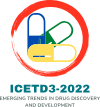Speaker
Description
Ischemic stroke is a commonly encountered and severe symptom of cerebral ischemia and other cerebrovascular disorder. It is a condition characterized by the rapid onset of cerebral injury resulting due to rupturing or obstructed blood supply in the brain. Stroke every year claims approximately 5 million lives globally and renders the same number bedridden with severe morbid states. Stroke is a heavy contributor to the socio-economic burden on families and the healthcare economy. On the other hand, stroke is rare in persons under the age of 40, and when it does occur, it’s usually due to excessive blood pressure. Unfortunately, pharmacological therapeutic choices are limited, and they are commonly unsuccessful during the preoperative period. Improved therapeutic results in patients necessitate novel techniques; thus, techniques like ischemia preconditioning (IPC) and ischemic postconditioning(iPoCo) were developed to reduce the severity of the injury. The impact of IPC and iPoCo on learning and memory function is widely investigated in rats and mice via a battery of behavioral, biochemical, and molecular methods. Ischemic preconditioning (IPC) is a process in which a sub-threshold ischemic shock to an organ activates cellular pathways that can assist in decreasing damage caused by later severe ischemic events. This finding implies that ischemic preconditioning (IPC) is a protective response to a potentially harmful stimulus like hypoxia, ischemia, inflammation, or hypoglycemia. Short episodes of ischemic reperfusion after a more severe type of ischemic shock to an organ are called ischemic postconditioning (iPoCo). The ischemic state induces several biochemical changes in the brain, and neuronal death follows. These changes are visible and can be evaluated by Branes task (Branes Circular Maze), Neurological Evaluation (Spontaneous activity, Symmetry in the movement of four limbs, Forepaw outstretching, Climbing, Body proprioception, Response to touching vibrissae), Elevated plus Maze Test, Sucrose Preference Test, Forced Swim Test, Social Interaction Test, Morris Water Maze Test, Open Field Test, Paw Pressure Test, Novel Object Recognition Test (NORT). We employ these models to close the pre-clinical research and clinical treatment gap.
